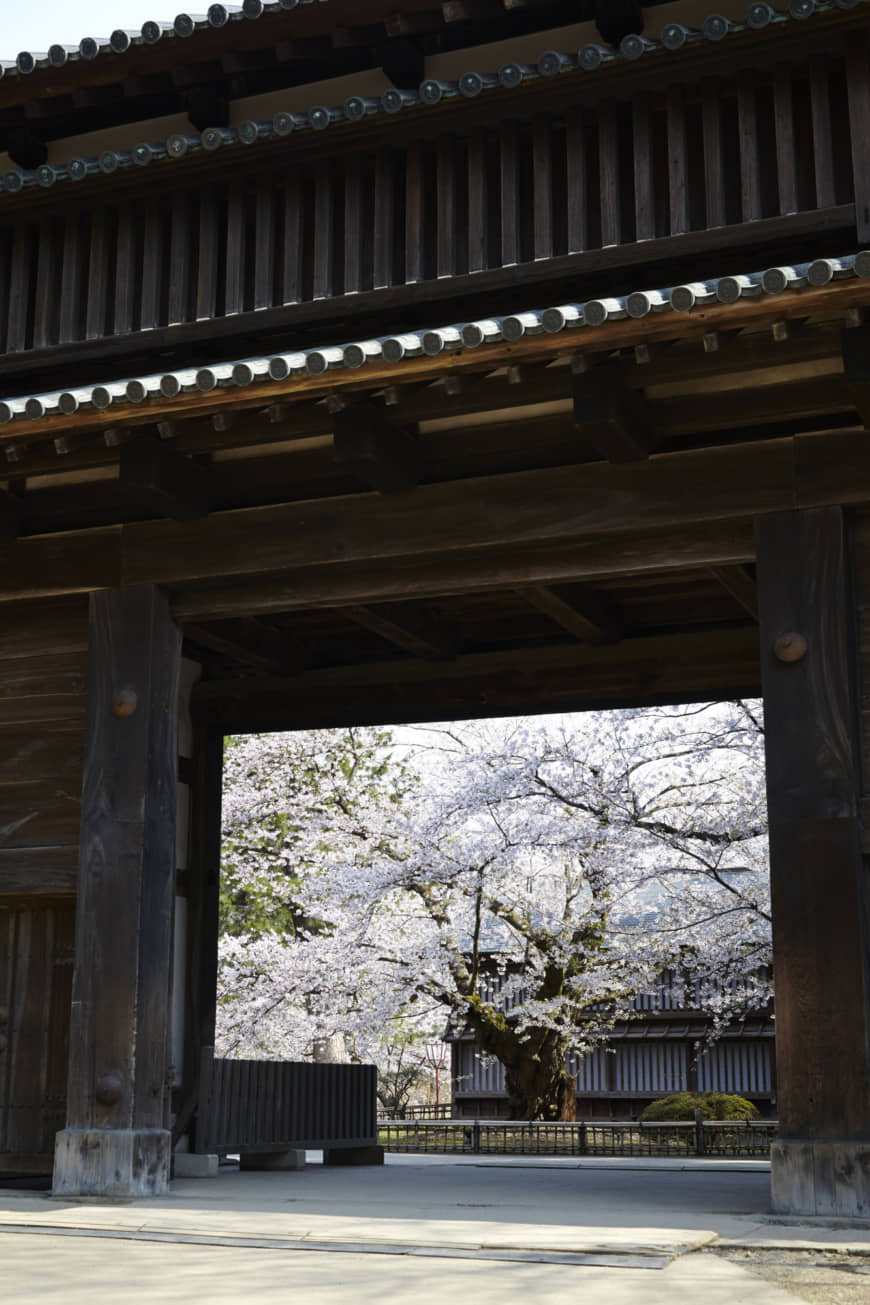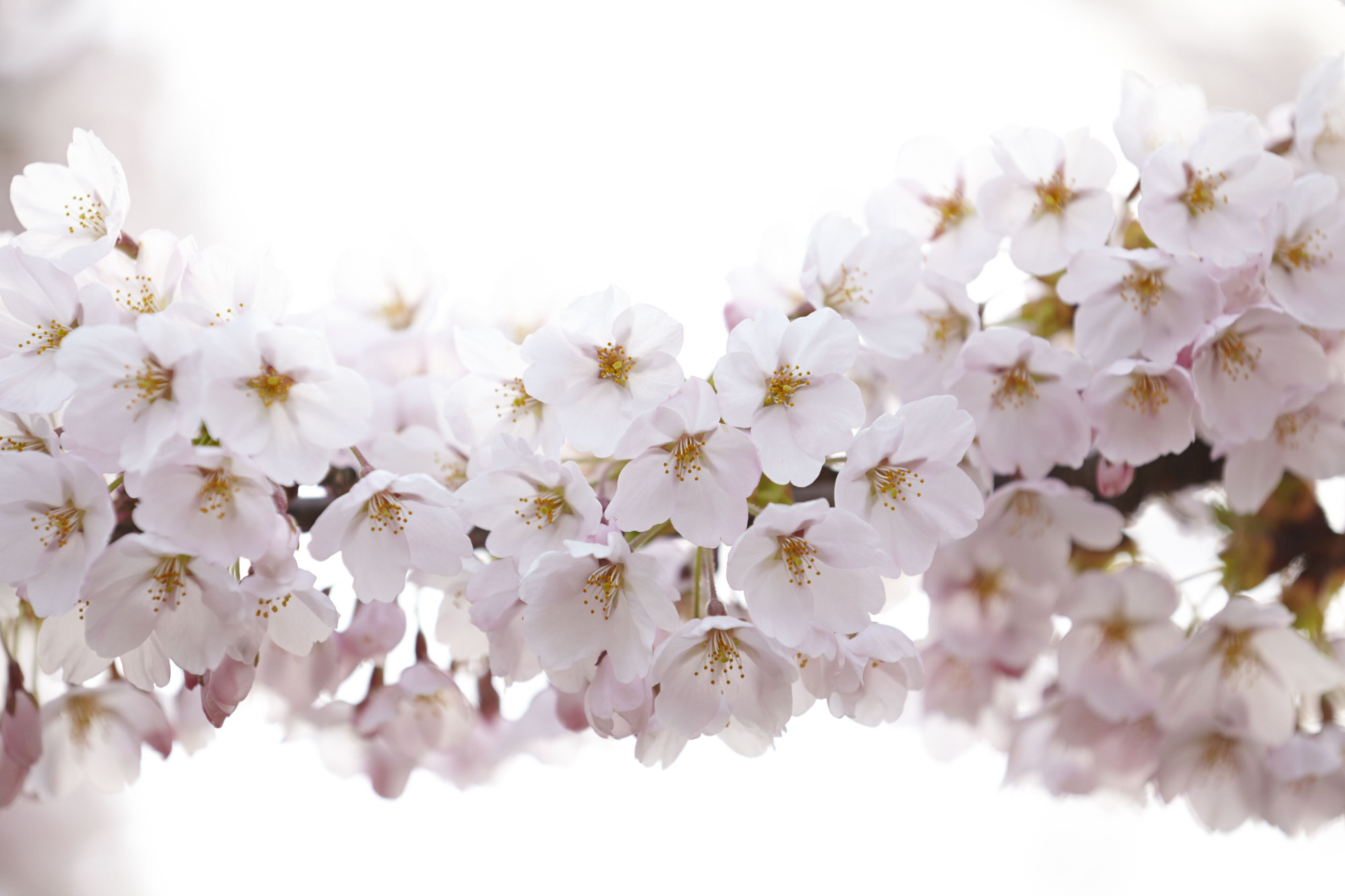When Japan underwent the great transformation from the samurai-dominated feudalism of the Edo Period (1603-1868) to the rapid modernization that characterized the subsequent Meiji Era, the castles that had for so long symbolized power and authority suddenly lost their significance. But the historical value of their sturdy stone ramparts and towering wooden keeps won renewed appreciation in the second half of the Meiji Era. Efforts were made to restore the castles, accompanied by extensive tree planting.

Once the first few buds of a cherry have opened on its otherwise bare branches, the entire tree is quickly covered in blossoms. The flowers are so profuse that they may block out the sky. But the glorious display of color is only a small part of the sakura's appeal. To many Japanese, the moment that resonates deepest in their hearts as they linger beneath a flowering cherry is when the frail petals begin to fall. As soon as the first petal lets go, gracefully giving up the struggle for life and floating slowly to the ground, another is quick to follow, and soon a multitude of pink flakes are fluttering down like snow. That exquisite instant when the life of a cherry blossom comes to an end reminds us of the transience of our world, and the impermanence of human existence. That awareness was an integral part of the samurai spirit.



















With your current subscription plan you can comment on stories. However, before writing your first comment, please create a display name in the Profile section of your subscriber account page.